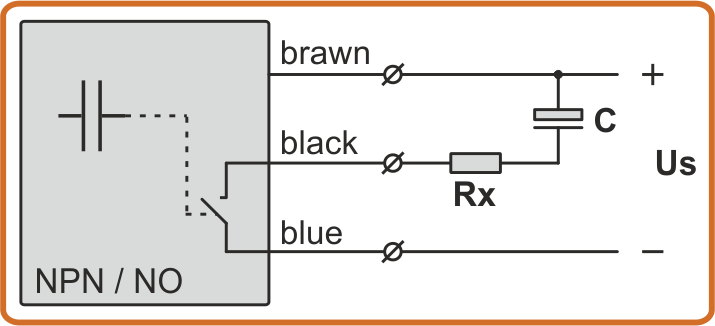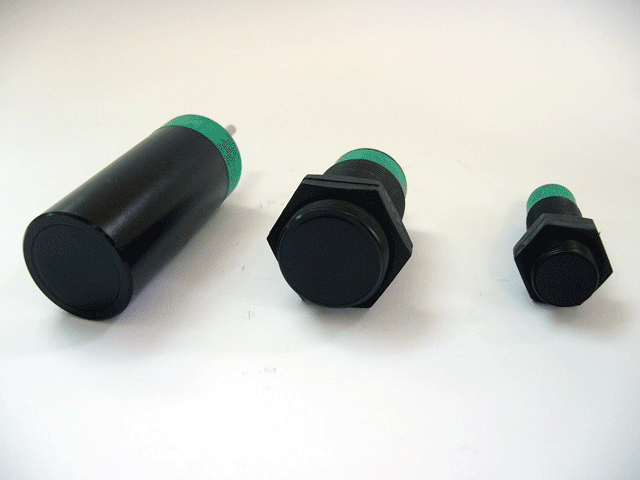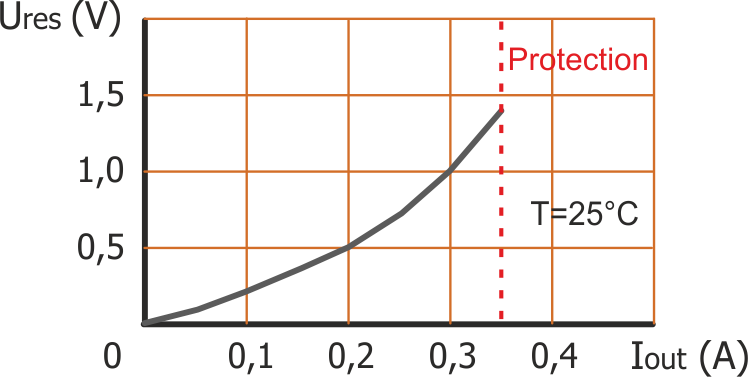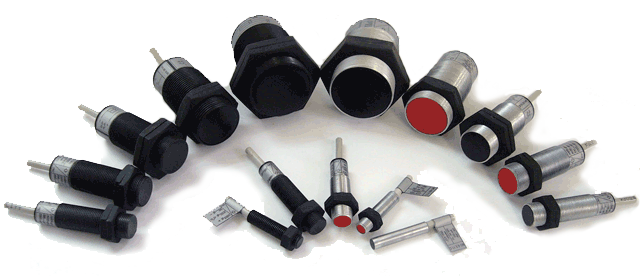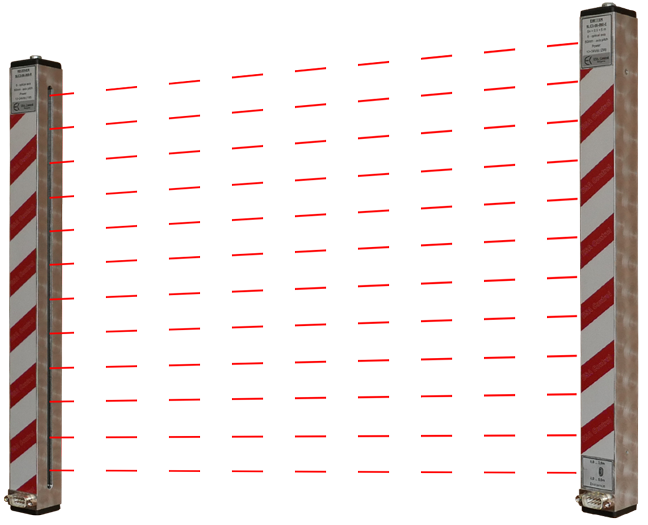Capacitive proximity sensors - DC Characteristics
Operating principle and purpose
The presented capacitive sensors are used to commutate direct current electrical circuits. Their action is based on a capacitive principle. When changing the dialectical permeability in front to their active part, their output switches over - the electric circuit opens up or shuts up. They react to metal or non-metal objects. The sensors have a potentiometer to adjust their sensitivity. When there is object in front of their active part, the output indicator is on. They are used as level controllers of bulk materials. They are widely used to automate production processes in the food processing industry, paper industry, textile industry etc.
Rules for installation of unshielded capacitive sensors
a) Installation a sensor to a metal plate
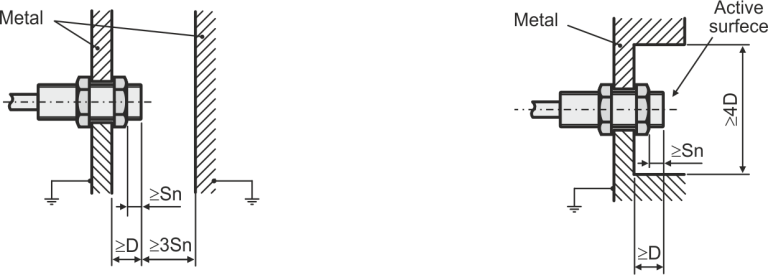
b) Installation of two or more sensors

Sn - номинално разстояние на включване
D - диаметър на датчика
Connection circuits of sensors
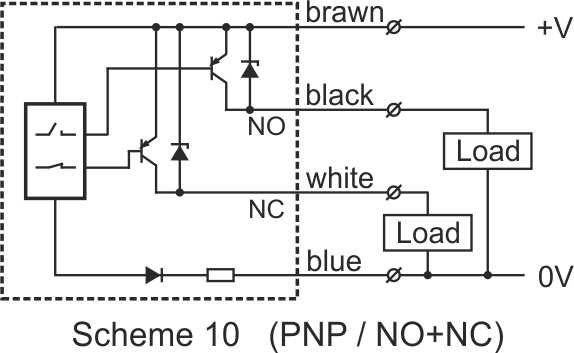
Scheme 10 (PNP/NO+NC)
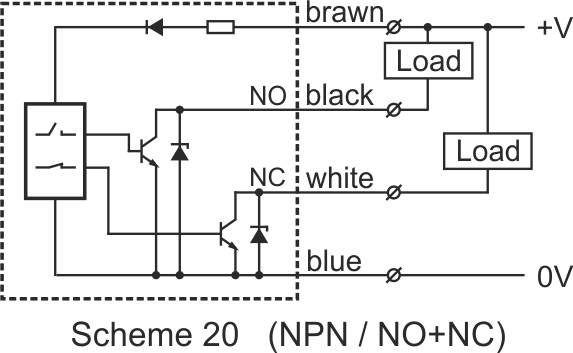
Scheme 20 (NPN/NO+NC)
Features of connecting a capacitive load to sensors with impulse protection against current overload
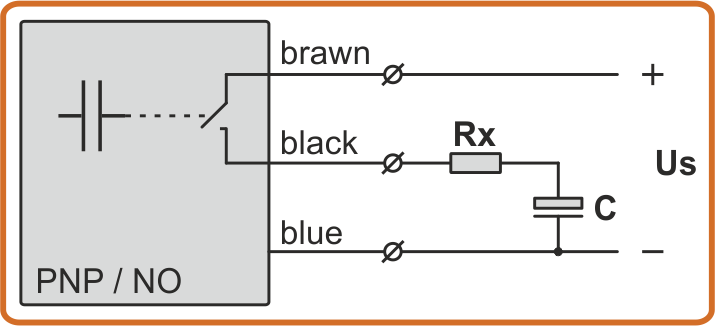
Connection of capacitive load to PNP type sensor
